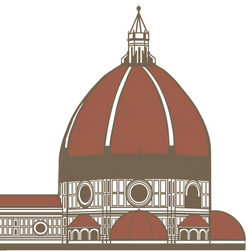Rome has always been a city of watchful things—statues peering from their pedestals, frescoed saints keeping their silent vigil, the ancient cobblestones worn smooth by centuries of footsteps. But no gaze in the Eternal City is quite as steady, quite as unblinking, as that of the Pantheon. It has been watching Rome for nearly two thousand years, its great oculus wide open to the heavens, never sleeping, never flinching.
A Temple That Refused to Die
Hadrian’s Pantheon—because make no mistake, it is Hadrian’s, not Agrippa’s, despite the inscription stubbornly proclaiming otherwise—is an architectural impossibility that simply refused to die. Other Roman temples fell, their marble stolen, their columns toppled, their bones scattered across the city to build new churches, new palaces, new empires. The Pantheon, somehow, survived. It didn’t just linger as a ruin, a shell of its former self. No, it remained whole, intact, alive—a temple that never surrendered to history.
Perhaps that is because it never belonged to just one era, one people, one faith. It was built as a temple for all gods (pan-theos), converted into a Christian church, later repurposed as a royal tomb, and today stands as something beyond classification. It is neither past nor present. It simply is.
The Dome: A Marvel of Earth and Sky
Step inside, and the first sensation is one of weightlessness. Unlike the dense stone corridors of the Colosseum or the hulking ruins of the Forum, the Pantheon opens up like a breath—a vast, airy expanse where stone dissolves into space. The dome, impossibly large and perfectly proportioned, hovers above, an optical illusion of engineering brilliance. It should not exist, and yet it does.
At its center, the oculus—a perfect circle, 30 feet across—remains the building’s only source of light, an architectural sleight of hand that gives the illusion of divinity descending directly from the sky. The sun pours in, a single celestial spotlight, shifting across the marble floor as the hours pass. It was an early clock, a cosmic sundial, a way for the Romans to measure time not in minutes but in radiance.
And when it rains? It rains inside, too. The water falls in silver ribbons through the oculus, pooling briefly before slipping away through almost-invisible drains in the floor. The Pantheon does not fight the elements; it accepts them. Let it rain. Let the world move on. The Pantheon remains.
The Lives Lived Beneath the Dome
This is not a dead monument, roped off and sterile. It is still a church, still a place of prayer, still a space where lives intersect. The great Renaissance artist Raphael is buried here, beneath an inscription that mourns how Nature herself feared to die after losing him. The kings of unified Italy rest here, too, as if the weight of their crowns still lingers in the air.
And yet, for all its grandeur, the Pantheon has also become something almost casual. Tourists wander through, necks craned, clicking photos in awe. Romans pass under its portico on their way to a morning caffè, hardly glancing up. It is at once extraordinary and utterly familiar—like the sun rising over the Tiber, like the scent of baking bread in Trastevere. It belongs to history, but it also belongs to today.
Rome’s Beating Heart
The Pantheon does not ask for attention. It does not compete with the Colosseum’s drama, the Vatican’s spectacle, or the Trevi Fountain’s glamour. It does not need to. It is simply there, as it has always been, as it always will be. It is the quiet heart of Rome, beating beneath the weight of centuries, gazing upward through its unblinking eye.
To stand inside it is to stand outside of time. Empires have risen and fallen. Wars have been waged and won and lost. The city around it has burned, rebuilt, reinvented itself countless times. And still, the Pantheon remains.
Watching. Waiting. Enduring.

